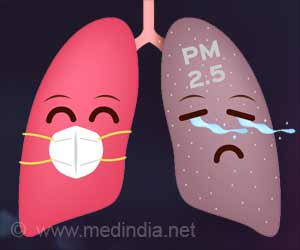More than 5,000 air pollution-related deaths were prevented over a decade in the New York City. Scientists found that the reduction of PM2.5 levels prevented the air pollution mortality burden among New York State residents.

‘More than 5,000 air pollution-related deaths were prevented over a decade in the New York City. Scientists found that the reduction of PM2.5 levels prevented the air pollution mortality burden among New York State residents.’
Read More..




Some come from burning fuel, and others form in the atmosphere as a result of complex reactions of chemicals such as sulfur dioxide and nitrogen oxides from power plants, industries and automobiles. Long-term exposure to PM2.5 can lead to respiratory and cardiovascular problems.Read More..
The study compared seven datasets, including both on-the-ground and satellite measurements, to analyze trends in PM2.5 levels across New York State.
The research team found that PM2.5 levels dropped by 28 to 37 percent between 2002 and 2012. They calculated that this drop cut the air pollution mortality burden for New York State residents by 67 percent -- from 8,410 premature deaths in 2002 to 2,750 deaths in 2012.
"What’s novel about this study is that we use seven different PM2.5 exposure estimates to analyze the long-term change in mortality burden, and they all show a consistent decrease in mortality burden," said Xiaomeng Jin, the Lamont researcher who led the study.
The study considered four ailments triggered by long-term exposure to fine particulate matter: chronic obstructive pulmonary diseases, ischemic heart disease, lung cancer, and cerebrovascular and ischemic stroke.
Advertisement
"Those reviews have sometimes resulted in stricter standards being set, which in turn set in motion the process of emission controls to meet those standards," said Lamont atmospheric chemist and co-author of the study Arlene Fiore.
Advertisement
Fiore said this study is a key step to documenting the health benefits from cleaner air.
Source-Eurekalert









